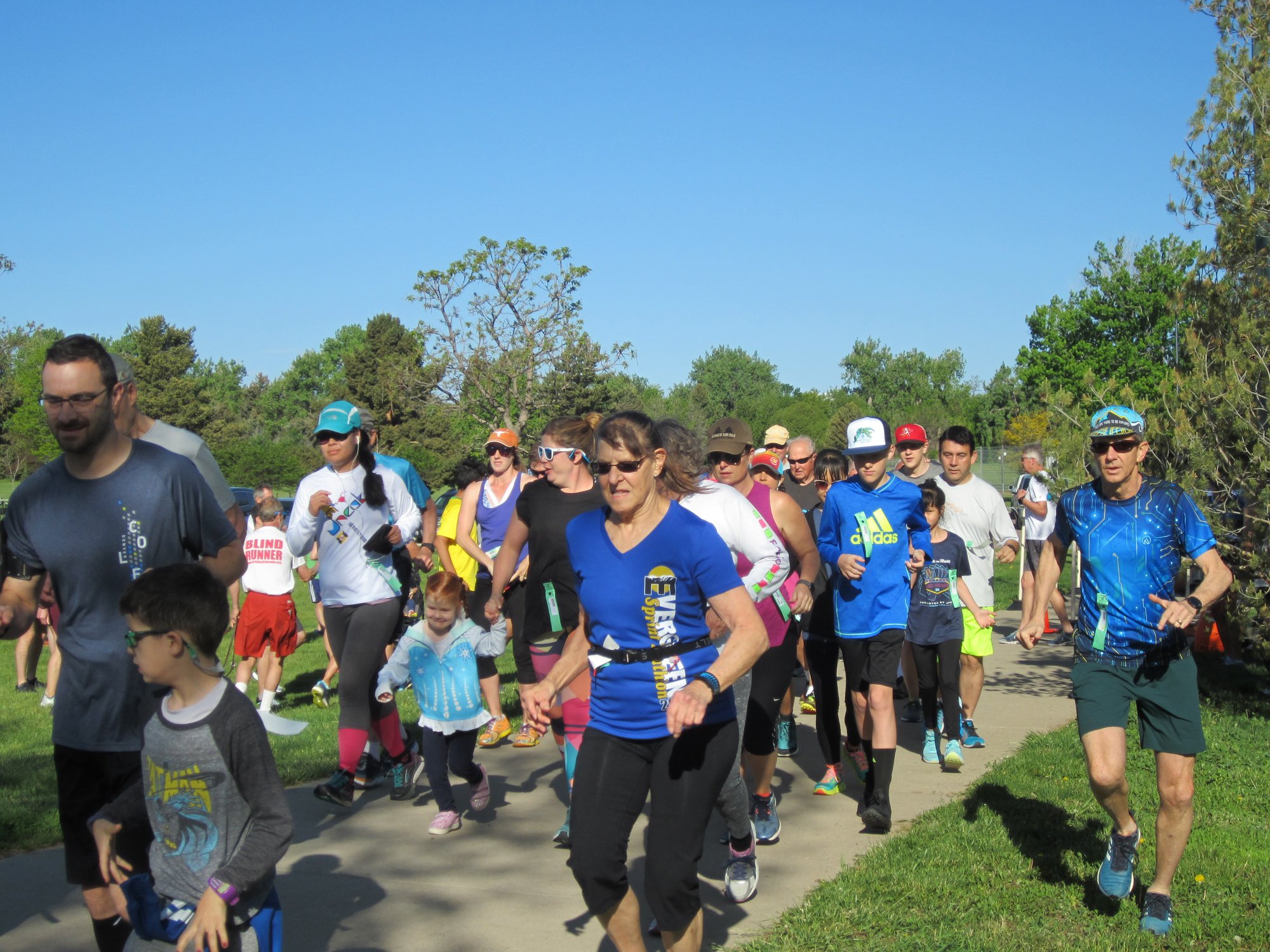Part 4: 1971-1975 The Start of the Growth Years
Part 3 described the sudden formation of the RMRR at the end of 1970. Art Caldwell took over as president and held that position for three years until he left Colorado after a Martin Marietta layoff. The race program management was under the control of Dennis Kavanaugh. They were regularly assisted by Treasurer Dave Daubert, who was a Denver Police Officer. With the club under their competent and energetic leadership, the club entered into a lengthy period of continued growth. This period also corresponded to the early stages of the running craze that was to sweep the country for over a decade.
1971: During the first year of the club’s existence, the total budget was $898.63. The majority of this was spent for trophies and awards for club sponsored races. The annual club racing schedule was centered around the 16 handicap races, and numerous scratch and RMAAU events. The Denver Mile High Marathon was first held in 1971. There was a supporting four race series of 5, 10, 15 and 20 miles. All five of these races were to become popular events with good participation for many years. In 1971 the first Mt. Evans Trophy Run was organized by Roger Gerard. The race was won by Zepher Isley. The Mt. Evans races are still some of the more memorable races in my past. Like Pikes Peak, they were frequently more of an internal struggle than a race.
1972: The first ever RMRR race (and probably Colorado road race) with 100 runners was the June 1972 2-Mile Handicap Race at Berkeley Park. The fastest finisher was John Lunn in 9:38, pretty fast huh! This was followed by a new Colorado record of 132 runners in the national AAU 15 kilometer championship in August 1972. Long time RMRR member Jerry Wischmeyer won the October 1972 3-Mile Handicap race, and he is still running strong as a member of the club today. Way to go, Jerry.
1973: Due to the increasing number of club sponsored races, as well as the rapidly increasing number of race participants the functions of the race directors were becoming more time consuming. In addition, finding sufficient volunteers to direct all of the races was becoming a bigger problem. Effective Jan. 1, 1973, club rules were instituted that require each of the previous year’s handicap trophy series winners to be responsible for directing a club race the following year. To offset the opposition to this new rule, all race directors and nonrunning officials automatically received ½ of the total possible handicap points for that race. (Race scoring at that time was quite different than today, with the number of possibly points related to the total number of runners.)
In June 1973, the current and inactive former RMRR membership roll increased above 100 for the first time, at 104. (The active dues paying membership rose above 100 for the first time in 1974.) In August 1973, 247 runners participated in the Pikes Peak Marathon, becoming a new Colorado record as the largest race held in the state.
In December 1973, AAU notified the RMRR that less than 25% of the membership were AAU card carrying members and that club members would no longer be eligible for participation in AAU sanctioned races unless RMRR obtained a blanket AAU sanction status. The club applied for and obtained AAU membership and sanctioning of all 1974 races. The club did not renew its membership in 1975, instead we joined with the Road Runners Club of America in 1975, never to be affiliated with AAU again.
1974: Beginning in 1974, the handicap race series was changed from a 16 race format to the 12 race format that exists today. The scoring system was also revised at that time to the system that exists today. Most of the handicap scoring at that time was done through the efforts of Tom Baily. We owe thanks to Tom for putting the original system together. A new scoring change was also attempted in 1974 where only a runner’s best 10 of the 12 races would be counted for points. This attempt met with such confusion and opposition early in the year because it meant that no one really knew any meaningful standing until after the end of the December race. This type of scoring system was dropped early in 1974 and has never been attempted again. (Editor’s note: RMRR currently does use the best 10 out of 12 race scoring system.)
1975: The 50 mile Boulder Dash held on June 15, 1975 was probably the first ultra marathon race held in Colorado. The race went from CSU to CU campus. Three individuals finished the race, as well as some relay teams. The first RMRR 150 participant handicap race was the 5 Km July 1975 race.

